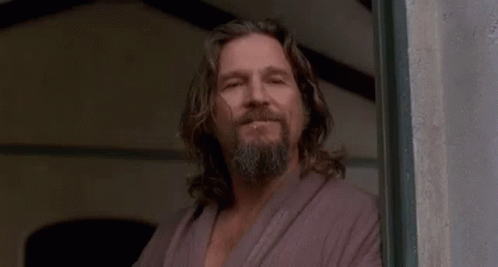I watch a lot of Dead Mall videos on YouTube and I wanted to see what everyone’s thoughts are on why there’s so many dead malls now.
Combinations. Amazon, smart phones, how kids hang out, poverty, giant stores like target and wal mart…It’s a bunch of reasons that all hit against malls.
Malls haven’t been the only hit over the decades. “Cruisin” is no longer a thing. Teens used to spend hours on nice nights driving up and down a certain stretch of road in nearly every city somewhere.
More kids used to ride bikes around for funnies.
Drive in movie theaters used to be huge.
Things always change and it’s almost never just a single reason.
“Cruisin” is no longer a thing. Teens used to spend hours on nice nights driving up and down a certain stretch of road in nearly every city somewhere.
Not only is this no longer a thing it’s actually explicitly illegal in some places. Passing the same location 4 times within a short period or “driving without a destination” can get you a ticket if the cops are paying attention.
That’s kinda fucked up. Almost sounds like laws targeting homeless people living out of their cars. And for anyone else, why shouldn’t I be able to just tour around and look at sights without necessarily stopping anywhere? That’s basically what I do every weekend for fun.
Yep. That’s the thing that never changes. “The man” is a total asshole killjoy.
“Cruisin” is no longer a thing
That’s not the case in much of the rural US. In small towns (~30-75k) everywhere there are kids driving up and down the road every Friday and Saturday night.
You’ll just have to trust me, or ask an old timer from one of those cities you speak of (I’m from one of several in the area). They’re about 1/4 the amount of traffic that they used to be.
It’s because they can’t remember where their meth dealer lives this week.
Part of that is also how in our car-centric society, our public transportation sucks. And biking is unsafe in many places— even spots that have bike lanes. Everything is too far way, so you can only get there by car. Everywhere you that is close is either unsafe or actually impossible to bike to, unless you’re lucky. And if you wanna take the metro or bus, it’s slow af, unreliable, and in many places has very few stops and runs infrequently.
And then the lack of people using public transportation only leads to more cars on the road which makes the problem even worse! More lanes, more land used for parking lot deserts, etc.
Nowhere to go, no way to get there, nothing to do.
This is one of my things I go off about. People sometimes tell me they want to move out of the city “for their kids” and I’m like are you crazy? The suburbs were hell as a kid. Can’t go anywhere because you don’t have a car and walking is dangerous and slow. I was always so jealous of my friends that lived in the city. They could just go do stuff
Birthed by and killed by capitalism. Tone deaf retailers charging too much for not enough for too long PLUS general trend to take away “free” public places where regular people can casually gather and kill a few hours having low/no cost fun.
For me personally, I’m fuckin lazy and the ability to have things delivered right to my door enables this laziness.
I think higher education may have played a role. Kids have to spend more time studying for longer into their life. Less time for careless days of youth when every job requires 10 years of experience. Young people have been obsessing over how to fluff their CV with credentials rather thing just living life.
As someone who lives through the height of the mall era I’m sad to see the go personally. However before online shopping it was sort of a pain in the ass. Not only did you have to go to the mall for clothes shopping sometimes you would have to go to more than one. I remember school clothes shopping would be a multi day affair to buy some jeans and shirts and a pair of shoes. If the mall didn’t have the store you needed you would sometimes have to drive really far to go to that store. If the mall didn’t have what you needed you were sort of SOL. So when online shopping started to provide anything you want in a few clicks it was not just the hard to obtain stuff people bought it was everything else too. But it’s sad so many teenage sagas played out in malls for me. Friendships were solidified and dating occured there. It was a place you could hang out for a few hours with no parents and navigate teenage social life. I am sure teens will just do something else but it holds a special place in my memory.
Anecdotal, but I grew up in the heyday of malls and my local mall was one of the largest, and is now one of the most famous dead malls. The mall was in decline when Amazon was still in its infancy, mostly still selling books. Buying clothes online was considered lunacy at the time because there was no fitting rooms to try things on. Still, vacancy was on the rise in the mall and once a few violent crimes started happening inside that was all she wrote. “Big Box” stores like Walmart became more of a draw than driving all the way to the mall.
I think the reasons for the death of the mall are more complex, just like the death of the department store. There were lots of weird tax incentives, both for developers, and for (mostly white) residents fleeing the urban core during the 90s. Those were not sustainable. Malls themselves were a bit of a private equity shell game which couldn’t last. The story of dead malls is more about capitalism and land use policy than just Amazon.
I’ll never forget Forest Fair Mall in those first years though. It’s 1.5 MILLION square feet, and it was absolutely packed, especially during Christmas. Humongous fountains, sand sculptures, live music… every single spot of its airfield-like parking lot was full. The only thing today that I think comes close, if younger people want the experience, is the main concourse of a top ten airport.
I think the West Edmonton Mall comes pretty close at 5.3 million square feet. I remember seeing dolphins in there.
West Ed is still dope. I don’t know about submarines, but they have a 10/10 water park in there, and a bunch of other stuff.
The West Edmonton Mall used to have more submarines than the Canadian navy. I think that was before the dolphins though.
My favorite stores in the mall in the 80s and early 90s were the Electronics Boutique, Waldenbooks, Tape World or Sam Goody, and Sharper Image. None of those thing exist anymore. When I go to the mall now, it’s 90% clothes and jewelry, and I’m just not that interested in it.
My kids like the rock/skate shops like B&C, Hot Topic, Zumiez, Vans… but it’s still just basically clothes.
I long for third spaces.
The mall is an ouroboros that demands I spend. But if it had a park combined with it, if it was just a series of semi-connected strip malls around a central or spread out park/walking path I’d be there constantly.
The mall just isn’t a enjoyable place to hang out unless you truly have no other choice, and even teenagers who don’t are opting to hang online because it’s less expensive and doesn’t require transit.
Yes! I’m amazed at how few responses here bring up the lack of attraction in a mall. Nearly every square foot has been given up for dumb kiosks for cell phone cases or something like that. There’s just nothing to give some warm fuzzies about visiting - a water feature, a kids play area… Heck, I grew up near the first indoor mall and at one point they had a giant parakeet cage. If one landed on your finger, you could keep the bird.
Dang, I kind of want one of those glass dragons. That sounds awesome
I’d like to think it was a combination of all the online shopping sites for all your non-groceries that started killing them off.
Why go to a mall to buy that hat you always wanted when it’s not only available online on the website of wherever you are planning to go but could be cheaper? That, or just buy it on Am*zon.
That, and I firmly believe people in various first world countries have gotten lazy enough that they’ll gladly wait the however long it takes for something to arrive by mail, but spending the time to have to drive somewhere and walk from the parking lot to wherever in the mall the store they want is? Haell Nah! Combine that with inflation (meaning higher gas prices) and you have people not going to malls unless they have to.
It’s why surviving US malls usually have something to keep them alive to attract people anymore, I swear. Some sort of gimmick like that one well known mall with the amusement park in it or how the mall near where I live has an aquarium in it (never been, so I don’t know how effective it is at attracting people). I don’t think the restaurants you’ll find in malls are even enough to attract enough people keep malls afloat, either, but I could be dead wrong about that one.
City Beautiful made a video video on the subject.
Great video thank you!
I think it is safe to say, the internet i general killed malls as people stopped leaving their homes the way they used to in general.
More joint households have both members in the work force limiting the amount of shopping being done between 9-5. Add to that the ease of ordering shit online. All of which is on top of malls requiring minors to be accompanied by adults. Add it all together and the result is noone goes to malls anymore.
Plus social media and the internet. Malls used to be teen hangout places but now there are a million more options that don’t involve the hassle of actually going somewhere.
Stores are becoming less relevant by the day.
It was always short sighted tax policy. We’re just living with the blowback.
But in 1954, apparently intending to stimulate capital investment in manufacturing in order to counter a mild recession, Congress replaced the straight-line approach with “accelerated depreciation,” which enabled owners to take huge deductions in the early years of a project’s life. This, Hanchett says, “transformed real-estate development into a lucrative ‘tax shelter.’ An investor making a profit from rental of a new building usually avoided all taxes on that income, since the ‘loss’ from depreciation canceled it out. And when the depreciation exceeded profits from the building itself—as it virtually always did in early years—the investor could use the excess ‘loss’ to cut other income taxes.” With realestate values going up during the 1950s and ’60s, savvy investors “could build a structure, claim ‘losses’ for several years while enjoying tax-free income, then sell the project for more than they had originally invested.”
Since the “accelerated depreciation” rule did not apply to renovation of existing buildings, investors “now looked away from established downtowns, where vacant land was scarce and new construction difficult,” Hanchett says. "Instead, they rushed to put their money into projects at the suburban fringe—especially into shopping centers.
http://archive.wilsonquarterly.com/in-essence/why-america-got-malled










